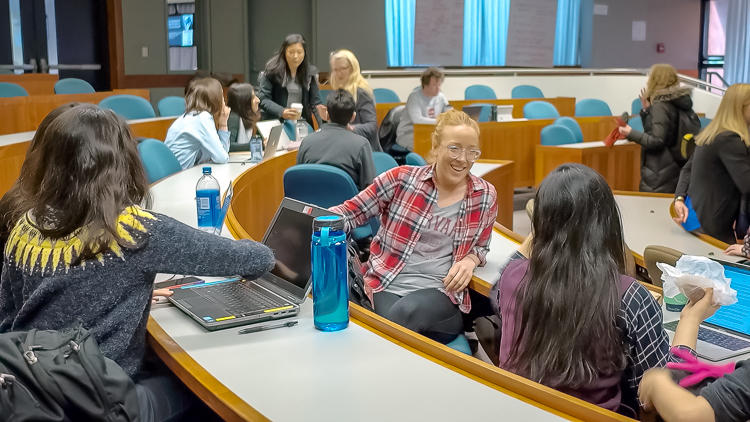It is easy for students to get into a routine of where they sit and who they talk to. While this might build a sense of familiarity among some students, it naturally limits the sharing of perspectives and building of community among all. To ensure that all students have opportunities to hear and learn from each other, Gretchen Brion-Meisels intentionally mixes up students within classes, using a range of grouping prompts across the semester. In this video, Brion-Meisels and her students talk about the value and efficiency of using fun prompts to quickly create diverse groupings.
Mixing students up in small discussion groups
Instructor
Gretchen Brion-Meisels, Lecturer on Education
Student Group
Graduate
School
Harvard Graduate School of Education
Course
Partnering with Youth in Educational Research and Practice
Group Size
23 students
- Creative prompts for grouping can help students get to know each other in the first days of class. Later in the semester, prompting students to meet with those they haven’t talked to yet or those with different perspectives on an issue can continue to enhance the classroom community.
- Consider your class size and pacing when building in opportunities to mix students up into different groups. In larger classes especially, be aware that frequent switching of groups may change the momentum of a class section.
- Small group discussions have been shown to have a range of academic benefits from increasing academic achievement, fostering favorable attitudes about science, math and engineering, and improving persistence in science, math, and engineering courses (Springer et al., 1999).
- Research on collaborative learning broadly suggests a beneficial link to diversity in the classroom (Cabrera et al., 2002).
- The nonprofit IDEA shares strategies for getting your students to engage in dialogue with peers whose experiences and views may differ from their own.
- The Faculty Focus Blog provides tips for increasing interaction in your classroom.
- The University of Waterloo’s Centre for Teaching Excellence provides a helpful list of group activities that will get students talking and interacting with each other.




